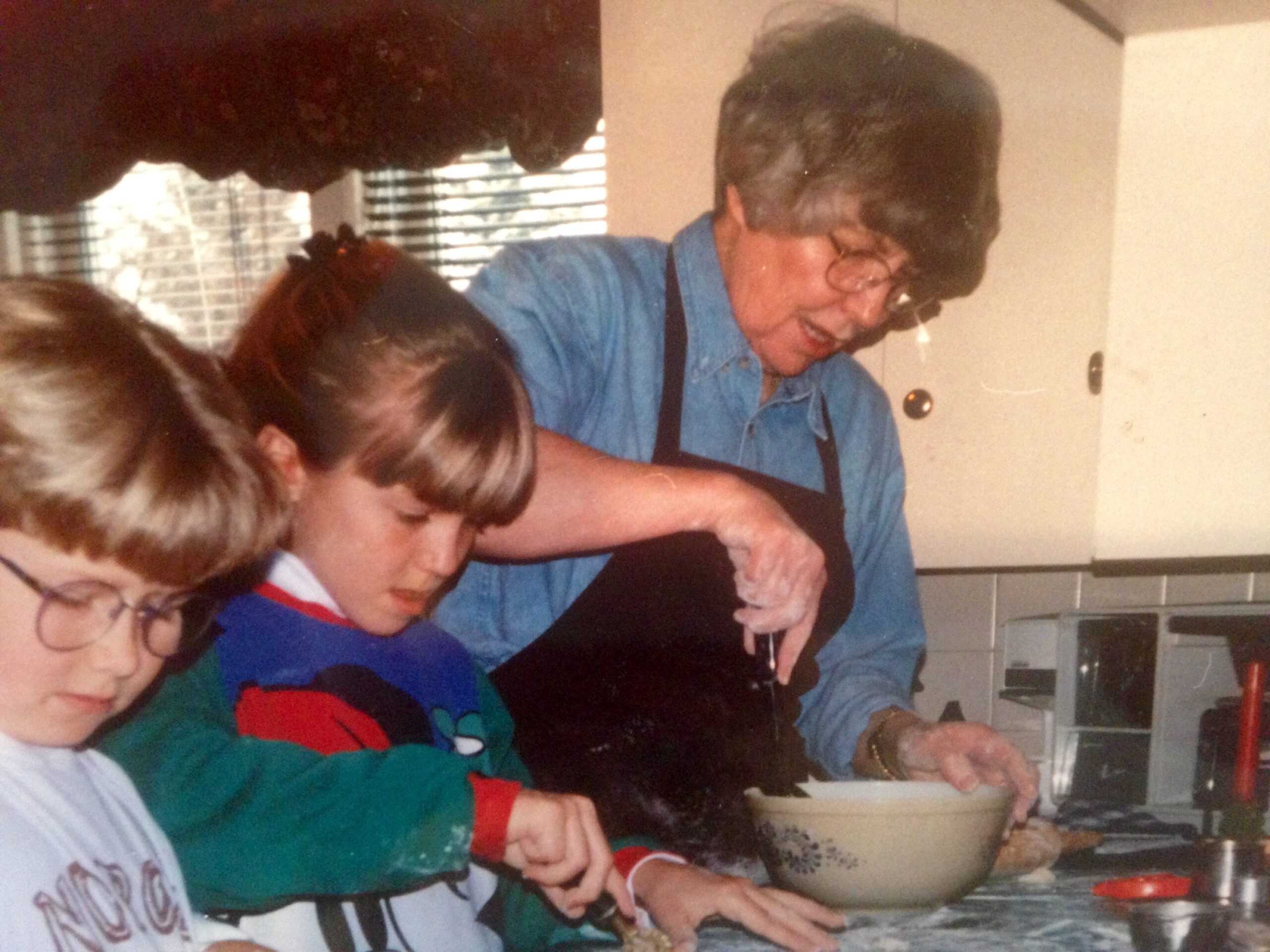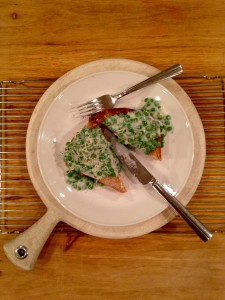Pictured above are Megan (center) and her sister Kierstin learning to bake from their grandmother, Rosemarie Myrdal (a.k.a. Granmarie)
By Megan Myrdal, RDN
The kitchen is often referred to as the “heart of the home,” and I find, no matter whose home I’m in, it’s where we spend most of our time. When I’m working away in my home kitchen, I love listening to public radio. I find that it provides the perfect mixture of news, music, arts, and culture, and seems to always spur good thinking to complement my (hopefully) good cooking.
I recently enjoyed an interview with Thomas Keller, acclaimed chef and owner of the restaurants Per Se in New York City and French Laundry in the Napa Valley. In the interview, Mr. Keller discussed his amazing creations and culinary strategies, and I was particularly struck by his reflections on an early career as a dishwasher, and how this experience influenced his craft today.
As the overweight and obesity crisis escalates, culinary skills and food knowledge are becoming more commonly acknowledged as basic life skills. As Mr. Keller discussed in the interview, the organization learned through washing dishes directly aligns with the skills needed to plan, prepare, and serve a variety of foods from scratch, and may be a good strategy for teaching kids in the kitchen.
During my elementary years, my parents both worked full-time, rotating kitchen duties seasonally. My mother cooked for the family throughout the summers filled with fieldwork; likewise, my father took over kitchen duties in the winters while my mother taught. As summers are a time for children to be outdoors and enjoy the fleeting warm weather we have in North Dakota, I spent little time helping my mother in the kitchen (sorry, Mom), but the winter memories of learning to cook with my father are something I still cherish today.
Dad would typically meet the school bus shortly after 4pm, and if homework was finished, we would begin planning what we would make for supper (that’s what we call dinner up north). After making our menu selections, we would inventory the freezer, refrigerator, and pantry to see what was already on hand. We would grab our ingredients and make a list of what was missing. If we could come up with suitable alternatives for what was on hand, we always did so. If it needed to be purchased, we would pile into the cold pickup and drive to our local grocery store.
As our dad cooked the meal, my sister and I would help with whatever task was age appropriate, and that started with washing the dishes. Dad would often comment how important this was. “Girls, how nice is it that when it’s time to eat, everything is already cleaned? Isn’t this how cooking should be?” Years later, when the Food Network became popular, my father often joked how he should have his own show called “Cooking & Cleaning” because he had “perfected the art” of doing so simultaneously. My sister and I might argue that he perfected the art of indentured servitude, but we won’t go there.
So, where am I going with this fond recollection? I truly believe that any time spent in the kitchen with children is valuable. To this day, I love organizing in the kitchen. I love making lists. I love cleaning as I cook and bake. I focus on creating a good ambiance in the kitchen, with lighting, music, and organization. These were all principles my Dad insisted were essential to good cooking, and I have found this to be so very true. These simple rules have made the kitchen a place I find peace and happiness, instead of what I hear some refer to as a place of chaos and confusion.
As part of the good food movement to improve health, we are increasingly recognizing the importance of food skills, and accepting that for healthy choices to happen, we must equip people with healthy food skills. A recent study from Johns Hopkins University Bloomberg School of Public Health found that people who frequently cook meals at home eat healthier and consume fewer calories than those who cook less; additionally, those who cook at home six or seven nights per week actually tend to eat less when they do dine out. Not only must these skills include the culinary basics, they should also include lessons on making the kitchen a place of fun and love.
One dish I fondly remember on those cold winter days is the incredibly simple yet delicious Creamed Peas on Toast. It was my first introduction to a roux, and I remember being amazed watching Dad melt flour and butter together, pour in milk, and see it come together into thick, creamy deliciousness! My mother often made homemade bread, similar to Amy’s Honey Whole Wheat, and this accompanied most family meals. Thick slices of this bread, toasted, lightly buttered, and topped with warm creamy peas is my definition of the perfect comfort food. Enjoy.
Creamed Peas on Whole Wheat Toast
Ingredients:
2 Tbsp. butter
¼ cup all-purpose flour
2 C. 2% milk
1 tsp. Colman’s Mustard
1 tsp. kosher salt
½ tsp. freshly ground black pepper
1, 1 lb. bag frozen peas
½ cup Parmesan cheese, freshly grated
Thick slices (~3/4 inch) bread, toasted
Parmesan Cheese, for garnish, freshly grated
Directions:
Melt butter in a large sauté pan over medium heat. Once melted, add flour and whisk to combine. Cook, stirring occasionally for about 2 minute, until lightly browned. Whisk in milk ¼ cup at a time, then add the salt, pepper, and mustard. Cook, stirring constantly, until thickened and bubbly (~5 minutes). Stir in peas and Parmesan cheese, and cook until peas are heated through and cheese melts (~5-7 minutes). Slice bread into thick slices, toast and lightly butter. Pour cream peas over toast. Grate Parmesan cheese over top.
Creamed Peas on Honey Whole Wheat Toast


